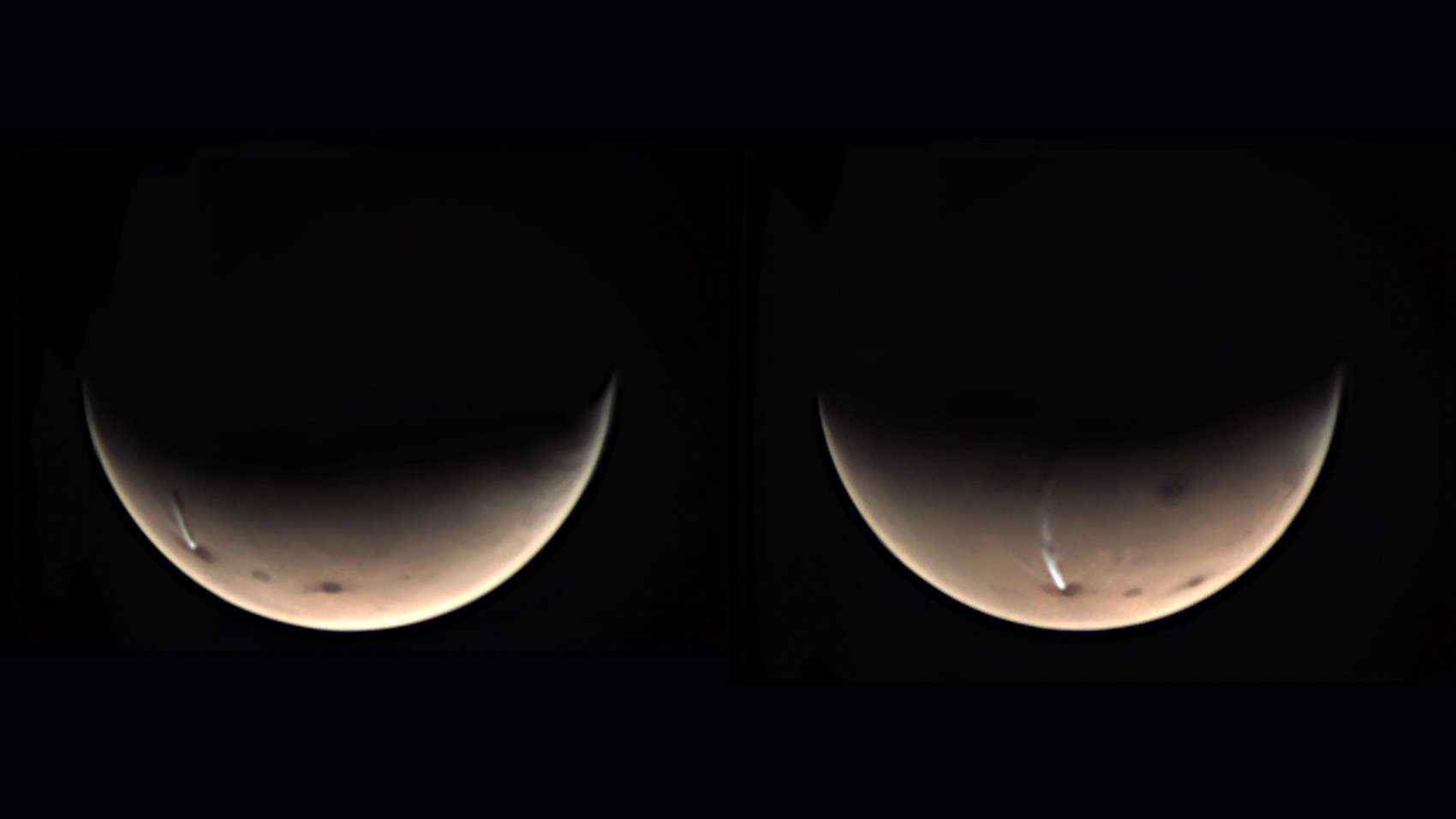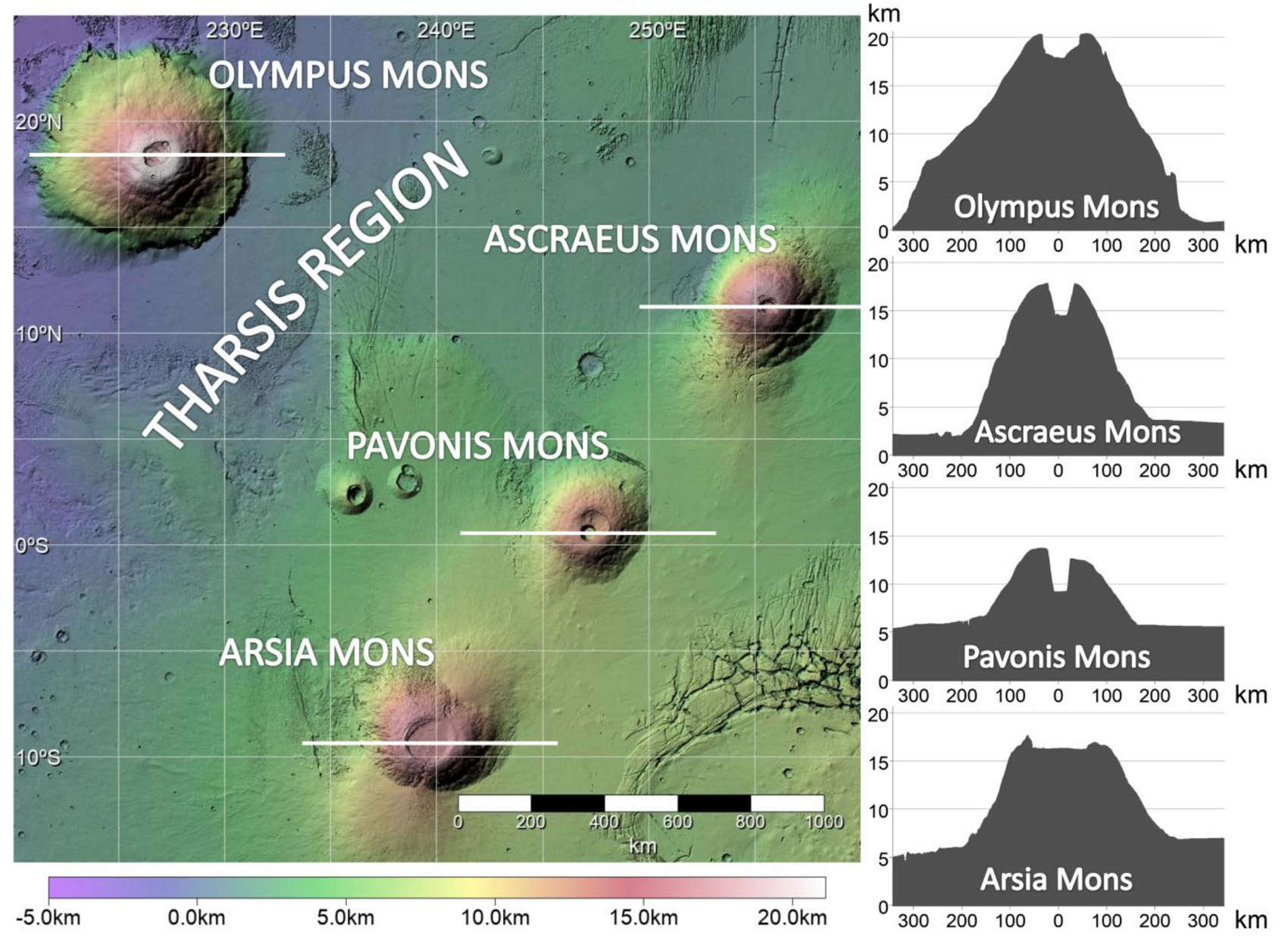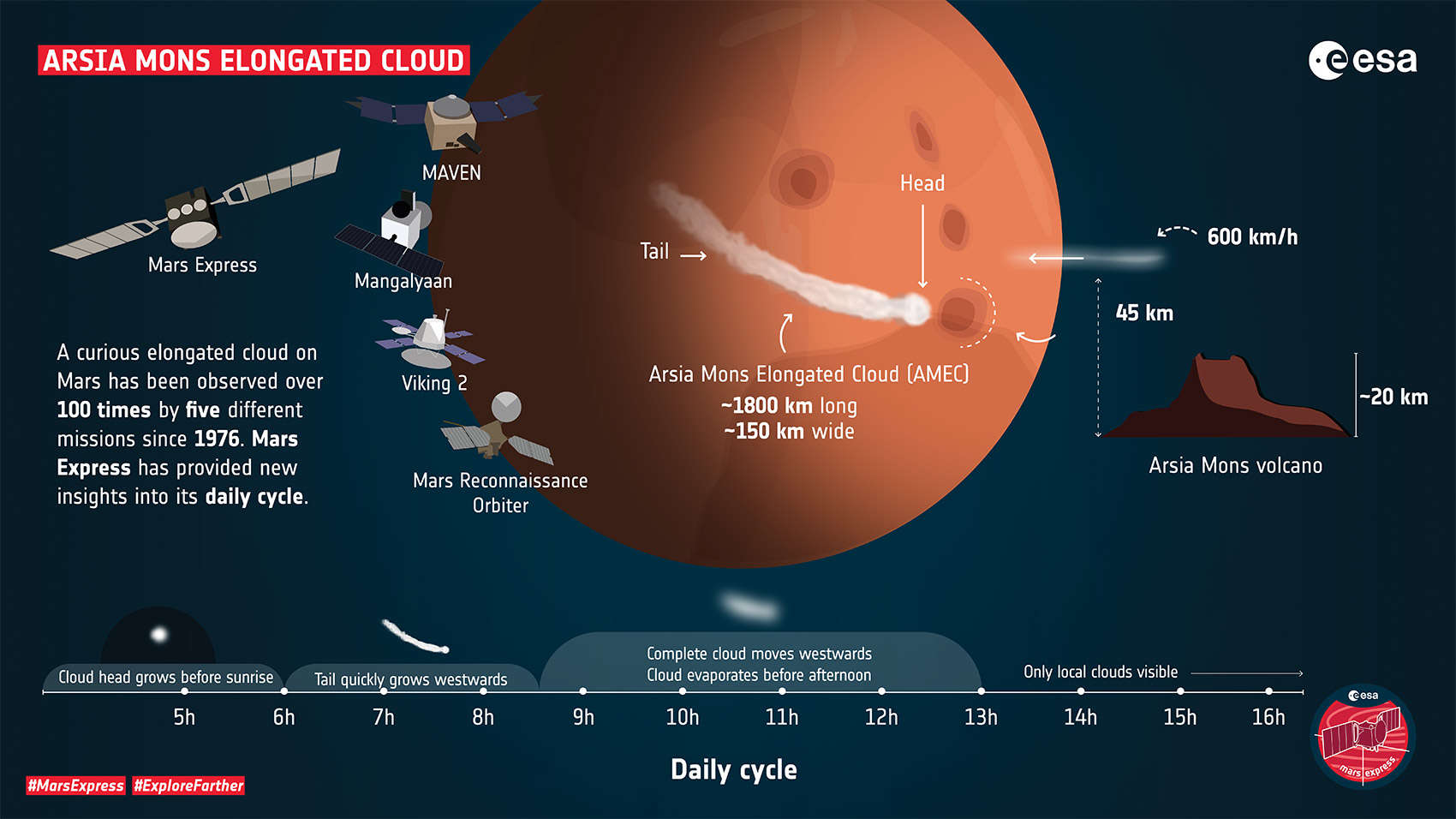Create a free profile to get unlimited access to exclusive videos, sweepstakes, and more!
Epic Martian cloud forms every summer day around an immense volcano

Every day in the late southern spring and summer, an astonishing elongated cloud forms around a gigantic volcano on Mars. This cloud appears every morning, grows to incredible length, and then dissipates before noon. This apparently happens every Martian year, but has been difficult to observe until recently by spacecraft orbiting the Red Planet.
And that in itself is amazing, because the cloud can get as long as 1,800 kilometers in just a few hours!
The cloud forms on the western flanks of the volcano Arsia Mons, the southernmost in a line of three ridiculously big volcanoes in an area of Mars called Tharsis, an enormous volcanic plateau about 5,000 km across (about the size of the continental United States). Arsia Mons is huge, about 500 km across and 17 km high. Mount Everest on Earth is only 9 km high, for comparison.
The volcano is just south of the Martian equator. Every year, starting in the late spring for a period that lasts many months, the cloud begins to form just before sunrise. It starts as a roughly circular patch called the head, which can grow to be 50 – 250 km across, averaging about 125 km. Once the Sun rises locally, the tail starts to grow, extending westward. It can grow at staggering speed, up to 600 kilometers per hour. It continues to grow for a few hours, then “detaches” from the head and dissipates until it’s gone before noon.
In Martian Year 34 (the last Martian year, which ended a few weeks ago) it grew to ridiculous lengths, 1,800 km — it could easily stretch from New York City to Miami. It’s usually fairly narrow, less then 200 km wide, too.
That’s a big cloud.
It’s almost certainly made of water ice. Mars is very dry, but there is a small amount of moisture in the atmosphere (and thin, wispy cirrus clouds are common). What is likely happening is what’s called orographic lift: Air blowing west rises up the flank of the volcano and blows over the top. The air is lofted quite high, up to the Martian mesosphere about 45 km above the surface. It’s so cold there that the water forms ice crystals that grow, creating the cloud’s head.
Once the ground warms enough the wind blows the cirrus ice clouds along with it to the west. The tail grows. But then as temperatures rise further the ice sublimates (turns back into a gas without turning into a liquid first; the air pressure is far too low on Mars to sustain liquid water) and the cloud is seen to dissipate.
This phenomenon only occurs around southern summer, so it’s clearly temperature related. Interestingly, that’s also when dust storms can form, and it’s possible that small amounts of dust in the air play a role here too. In Martian Year 34 (May 2017 to March 2019; Mars takes about two Earth years to orbit the Sun) there was also a global dust storm, an immense one (and so thick it caused the demise of the rover Opportunity), and that appears to have delayed the onset of the cloud formation. However, in MY 33 (June 2015 to May 2017) there was no global dust storm, and the cloud still grew more slowly. So there are years where there are storms that affect the cloud and years where they don’t, and the connection isn’t clear.
Given how huge the cloud is, it’s surprising it hasn’t been studied earlier. The problem lies in timing. The cloud forms in the morning and is gone by noon. Most spacecraft at Mars are in special orbits called afternoon Sun-synchronous polar orbits. As they circle in a north-south direction over the planet their orbital plane itself rotates, so it’s always afternoon over the part of the planet they pass. There are similar orbits used by Earth-observing satellites, so they always see the same illumination beneath them.
The problem there is that they then never pass over a spot on Mars when it’s local morning, so they miss the cloud. This changed recently with the European Space Agency’s Mars Express orbiter. It’s on a highly elliptical orbit that allows it to see areas at different local times of the day.
But there’s more to it. Mars Express has a camera onboard called the Visual Monitoring Camera, which was designed to monitor the deployment of the Beagle 2 lander (which, sadly, was lost after it landed on Mars). The VMC is more like a webcam than a scientific instrument, with relatively low resolution but a wide field of view. It was turned off after Beagle 2 was deployed, but years later switched back on so it could be used to take “tourist shots” of Mars for public outreach. Scientists realized it could be put to use for scientific purposes, and it’s perfect to observe the cloud.
They were also able to find observations of the cloud in other missions as well, including MAVEN, Viking 2 (from the 1970s!), Mars Reconnaissance Orbiter, and India’s Mars Orbiter Mission. All these observations together allowed them to piece together what’s happening as the cloud forms.
In this first paper they discussed the observations and gave an overview on the formation, but a later paper will go into details on the physics. I’ll be very interested to see that. I love clouds, and live in an area (just east of the Rockies) where I see a lot of peculiar formations, including lots of orographic formations. It’s hard not to be fascinated and awed by the beautiful cloud structures here.
… and there. Mars is a weird little planet, with so much to see and explore. The Arsia Mons cloud can be used to help scientists understand the Martian atmosphere, which clearly has lots of secrets to reveal.
Some of which are obviously huge yet hidden in plain sight.
[Correction (March 12, 2021): I originally wrote that there was a global dust storm in Martian Year 33, but that is incorrect.]





























